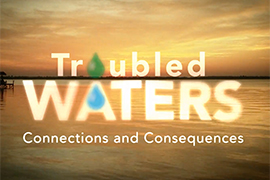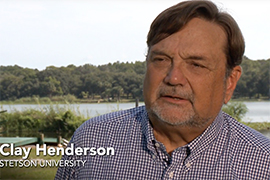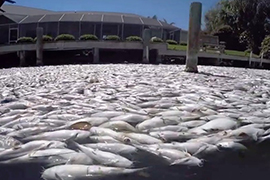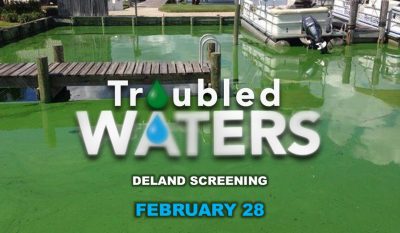Screening of New Documentary, Panel Discussion set for Feb. 28

Clay Henderson sees a crisis coming for the St. Johns River and the culprit lies just beneath the surface.
Volusia County has 100,000 septic tanks in use and, with every flush of a toilet, they release nitrogen, pharmaceuticals and other pollutants into the St. Johns River and local springs.
“You look at our water problems in this county and that includes the springs and the St. Johns River, they are imperiled because of too many nutrients,” Henderson, executive director of Stetson University’s Institute for Water and Environmental Resilience, said during a phone interview. “That translates into runoff from septic tanks.”

Henderson is among the experts and advocates interviewed in a new documentary, “Troubled Waters, Connections and Consequences,” which will have its first showing locally on Tuesday, Feb. 28, at 6 p.m. in the Athens Theatre in downtown DeLand. After the film, Henderson will join a panel that discusses pollution problems in Florida’s waterways and what people can do to help.
Stetson’s Institute for Water and Environmental Resilience is co-hosting Tuesday’s event, along with St. Johns Riverkeeper, a group that works to protect and restore the river, and which funded the movie. The screening and panel discussion are free and open to the public at the Athens Theatre, 124 N. Florida Ave., in DeLand. Cultural credit is available for Stetson students. Click here to register.

According to the Troubled Waters website, pollution is a significant problem for the state’s rivers, lakes, and underground water supplies. Fertilizer runoff, poorly treated municipal and industrial wastewater, and failing septic tanks are causing nutrient overload. That feeds toxic algal blooms, which deplete oxygen in the water and cause widespread fish kills.
And although water is plentiful in Florida, the state’s demand for fresh water has become a critical issue. Florida’s population used about 1.5 billion gallons of water a day in 1950 and that number is projected to reach 9.3 billion gallons a day by 2020, according to a state report last June.
“For some years, we’ve been coming close to an environmental crisis because of water issues in Florida,” Henderson, an attorney and noted environmentalist, says at the beginning of the film.
Stetson students and faculty, including Henderson, paddled with the documentary’s film crew along the St. Johns River in Volusia County in March 2016 as the crew toured the entire 310-mile river to shoot footage and conduct interviews.

Henderson and St. Johns Riverkeeper Lisa Rinaman said the movie comes as environmental protections are being dismantled on a state and federal level. President Trump signed a resolution last week to permit the dumping of mining waste in waterways and is working on executive orders aimed at ending regulations on climate and water pollution, according to The Washington Post. Trump has said the regulations stifle economic growth.
Rinaman said she hopes the movie serves as a “call to action,” motivating people to take steps to conserve water and contact their elected officials to make their voices heard.
“There is such an attack on regulations, but regulations are there to protect our water and our air,” Rinaman said in a phone interview. “The film was completed right before the election. There’s nothing in it about the election, but with the current political environment, it just exaggerates all the issues that are in the film.”
-Cory Lancaster



